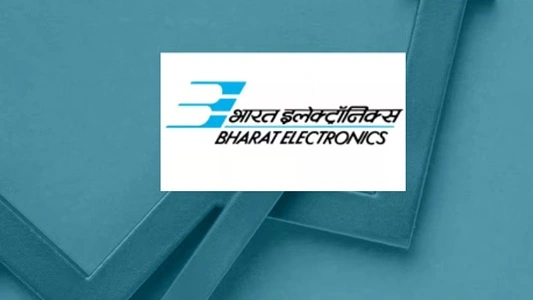Reliance Industries Limited (RIL) and Bharat Electronics Limited (BEL) present a fascinating contrast in the Indian equities scene. BEL, a significant public sector business with a military specialization, is a classic illustration of PSUs’ resurgence in vital sectors. Reliance, however, is indicative of the private sector’s vigor and variety. For investors navigating India’s development narrative, their diverse business structures, growth routes, and market performances present unique value propositions.

Market leadership and strategic positioning
BEL share price is impacted by its supremacy in military electronics. With an 81% revenue dependency on military contracts, the firm is India’s biggest provider of mission-critical equipment, including radars, missile electronics, and communication infrastructure. This specialization ties in neatly with India’s ambitions to enhance military indigenization via programs like “Make in India.” With an order book worth over ₹75,000 crore as of mid-2025, BEL offers income visibility over many years. This pipeline is further supported by recent contracts like as the ₹2,323 crore delivery of replacement components for naval missile systems.
Reliance’s full energy-to-consumer ecosystem is the explanation for its healthy share price. Reliance operates via the interconnected verticals of Oil-to-Chemicals (O2C), Retail, and Digital Services (Jio), in contrast to BEL’s sectoral concentration. Sector-specific volatility is mitigated by this diversity. Even while O2C provides for the majority of income, future development is driven by retail and digital services, which take advantage of India’s rising consumer base. The magnitude of Reliance is amazing; its market capitalization of ₹19.27 lakh crore is significantly greater than BEL’s ₹2.92 lakh crore.
Financial Health and Operational Metrics
Excellent profitability statistics are reflected in the increase of BEL’s share price. The company’s return on equity (ROE) and return on capital employed (ROCE) are 29.3% and 39%, respectively, much greater than Reliance’s 8.26% ROE. Due to excellent execution and pricing strength in military contracts, operational margins grew to 29% in FY25. But this success comes with expensive valuations: BEL is trading at a price-to-book ratio of 14.6x and a P/E ratio of 54.4x, which is much higher than Reliance’s 23.65x P/E and 2.29x P/B.
Cash flow diversification is vital to the health of Reliance’s financial engine. While petrochemicals and refineries give constant income, consumer companies like Jio and retail offer significant growth margins. Reliance’s solid cash reserves let it maintain a good debt-to-equity ratio of 0.44. Its lower earnings multiples represent distinct growth opportunities, even if its dividend yield (0.39%) is somewhat lower than BEL’s 0.55%.
Growth Catalysts and Sectoral Tailwinds
Spending by the state determines BEL’s economic trajectory. BEL aims to gain greatly from India’s FY25 military budget of ₹6.2 lakh crore and emphasis on local procurement. FY26 is anticipated to have 27% EBITDA margins and 15–17% annual sales growth, according to management projections. Upcoming opportunities include:
- Missile systems: Orders for QRSAM, LRSAM, and Project Kusha
- Naval modernization: Next-gen corvette electronics
- Export potential: Rising interest in Akash missiles and radars from Southeast Asia and the Middle East
Deepening indigenization is the objective of strategic initiatives like the semiconductor MOU with Tata Electronics.
Scaling consumer platforms is essential to the future of Reliance share price. Despite cyclical issues hitting traditional energy sectors:
- Retail expansion: Penetrating tier-3/4 cities and scaling e-commerce
- 5G monetization: Jio’s infrastructure leadership and premium service bundling
- New energy: Solar and hydrogen investments positioning it for India’s green transition
Reliance’s underlying strength remains its ability to move resources into higher-margin consumer companies.
Considerations for Risk and Valuation
BEL’s premium valuation (54x P/E) prices in near-perfect execution. Risks include:
- Working capital strain: Days inventory increased from 43.8 to 85.4 days, reflecting complex project timelines
- Policy shifts: Changes in defense offset clauses or procurement delays
- Export concentration: Limited global footprint increases domestic dependency
Reliance’s valuation discount versus BEL reflects energy sector cyclicality. Key risks involve:
- Oil price volatility: Refining margins fluctuate with crude dynamics
- Consumer saturation: Intensifying competition in telecom and retail
- Capital intensity: Heavy investments in renewables could pressure near-term returns
Investment Thesis: Divergent Paths to Wealth Creation
BEL is a focused investment in India’s military modernization, a concept with great confidence, governmental backing, and clear earnings development. Its high prices allow leveraged exposure to military indigenization, but they also expect great performance. On the other hand, reliance is a macroeconomic stand-in. With consumer platforms unlocking future potential, their diverse strategy delivers stability throughout cycles.
Investors must determine whether they believe in variety or specialization. While Reliance gives size and flexibility throughout India’s consumer and digital transformation, BEL generates superior profitability in a captive market. Despite choosing completely dissimilar roadways, both continue to play a vital position in India’s economic story.


